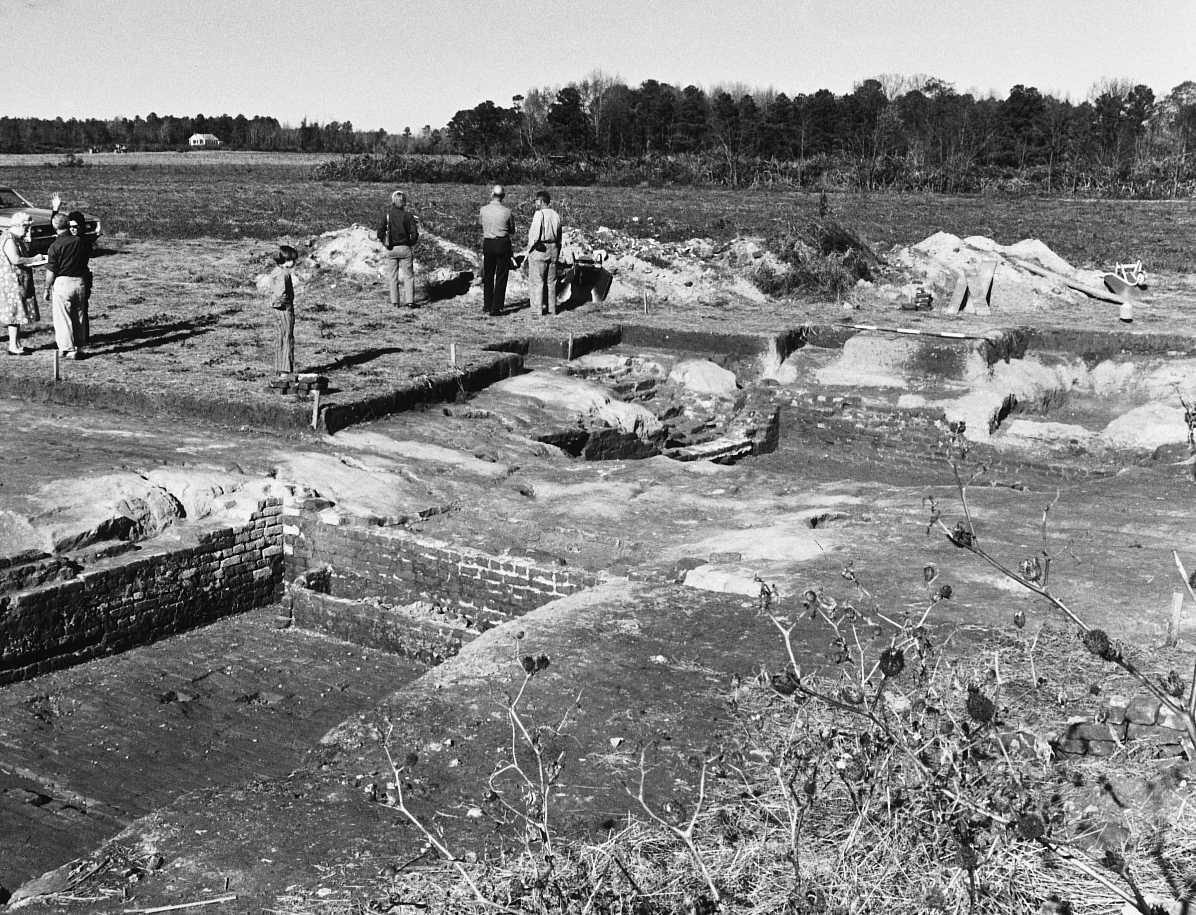Millenbeck Plantation
Millenbeck was the seat of the Ball family in the Northern Neck for over 100 years.
The site was first known as Quiacomock, the name of a nearby Indian town. The land near the mouth of the Corotoman River was inhabited by the Cuttatawomen tribe, observed by John Smith as having "30 fighting men."
On March 23rd, 1640 Edward Grimes received a patent for 150 acres at Quiacomock. By the time of his death he had acquired 470 acres in the area. In his will dated 1653 he left the land to stepson William Wroughton. In 1661 Wroughton leased the original 150 acre portion of the Quiacomock patent to Nicholas Heale and Robert Pollard for ten years. According to the lease Heale and Pollard were to build houses, plant 100 apple trees, and clear ground to grow tobacco. The lease was to be settled in four payments, the first three made in indentured servants and the final payment was 4,000 pounds of tobacco raised from the land.
In September 1667 William Ball I patented 240 acres of land lying north of Quiacomock that had originally been patented by Grimes but had perhaps reverted back to the crown. Neither Heale or Pollard lived to see the end of their ten year lease with Wroughton, and in 1670 Domini Thoryatt took out a new lease on all of William Wroughton's lands in Lancaster County until 1687. During the time of Bacon's Rebellion in 1676 a fort stood near Quiacomock, but the ruins have now eroded more than 100 feet off shore. On June 30th, 1680 William Ball purchased three separate pieces of land from Wroughton totaling 280 acres including the 150 acre patent for Quiacomock.
William Ball was dead within half a year of purchasing the land, he had served as Colonel in the Militia, Justice and Burgess. The property, still under lease to Thoryatt, passed to his oldest son, William II. William Ball II held many of the same offices and honors as his father, but did not develop the property at Quiacomock before his death in 1694. William Ball III was the first Ball to live on the property. He married Hannah Heale before 1694 and they may have lived in one of the homes built by Nicholas Heale and Robert Pollard around 1661. William III continued his family's tradition of public service and served many years at Williamsburg in the House of Burgess before retiring to Lancaster in 1726. William III appears to have built the mansion house and given the plantation it's name. When he wrote his will in 1745 he left the home to his grandson, William V, son of William IV deceased. William V met with financial troubles and by 1758 had left Lancaster County. An auction was held on the steps of Millenbeck to settle his debts. He died at sea in 1760 and left no will. His son, William VI, was taken charge of by Richard Lee, the brother of his step-mother. With little more to his name than the empty house William VI set up a medical shop in the home. He married Catherine Campbell and had four children, but both of their sons died young. After the Revolutionary War William VI put in claims for beef impressed by the Revolutionary Army and slaves lost to the British Army. William VI died in 1785 and left his estate to his wife for the maintenance of their two daughters. The inventory of the estate indicated that only four rooms of the house were furnished, but counted seventeen slaves and numerous heads of livestock. The daughters and their families lived on the plantation as late as 1811. Eventually the home was abandoned and over time it's location was lost.
In 1970 and 1971 an archaeological excavation was performed to find more information about the mansion house. The analysis of the foundations and artifacts uncovered during the excavation concluded that manor home at Millenbeck was built between 1710 and 1737 and was inhabited until some point between 1820 and 1830. The home was 56 1/2 feet long and 15 feet wide. A wine bottle seal dated 1711 and stamped with the name William Ball was found among many other artifacts.
Map:

Comments:

Sources:

- Mann, Nina T. Millenbeck: An Archaeological Excavation of a Colonial Mansion. Lancaster, Va: Mary Ball Washington Museum & Library, 1976. Print.
- Dorman, John F. Adventurers of Purse and Person : Virginia 1607-1624/5: Volume Three Families R-Z. Baltimore, MD: Genealogical Pub. Co, 2007. Print. Pg. 847.
Future 2:

Future 3:

Future 4:

Future 3:


